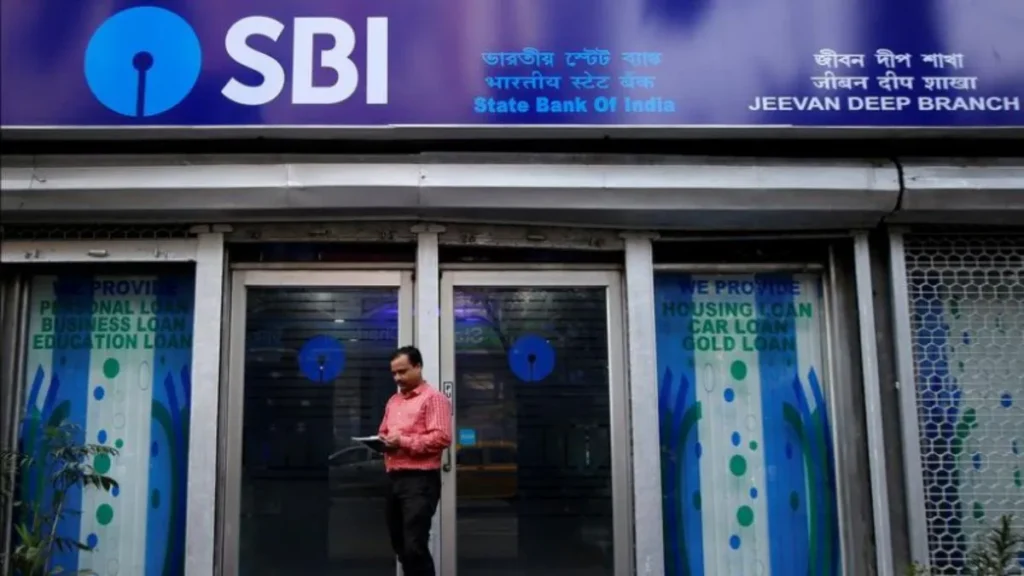Starting your investment journey in India doesn’t have to be risky. With the right choices, beginners can grow their money steadily and safely. In this guide, I’ll explain the top five low-risk investment options that offer peace of mind while helping you build wealth step by step. Let’s explore smart, secure ways to invest.
Let’s talk about why low-risk investments are ideal for beginners. They offer a stable way to grow your savings without worrying about losing your money. For those new to investing, these options provide steady returns while minimizing risks. It’s a smart approach to start building wealth with confidence and security.
Now, let’s take a look at why low-risk investments matter for new investors. When you’re just starting, protecting your initial savings is crucial. Low-risk options allow you to grow your money without exposing it to high volatility. This approach ensures that your investment journey begins on a strong, stable foundation, giving you the confidence to explore more opportunities in the future.

What are Low-Risk Investments?
Low-risk investments are financial options that prioritize the safety of your money while offering modest returns. These investments are ideal for beginners because they minimize the chance of losing your principal amount.
Common low-risk options include fixed deposits, government bonds, and certain mutual funds. While the returns may not be as high as riskier investments, they provide steady growth, making them a reliable choice for those looking to secure their financial future without unnecessary risks.
Definition and Explanation of Low-Risk Investments
Let’s first understand what low-risk investments are. These are financial products designed to protect your initial capital while offering a modest, predictable return. Unlike high-risk investments, which can fluctuate wildly, low-risk options focus on stability.
For example, fixed deposits and government bonds are considered low-risk because they provide guaranteed returns. These investments are ideal for beginners, as they minimize the chances of losing money while still allowing for steady growth.
By choosing low-risk investments, you can start building wealth with confidence, knowing your hard-earned money is in safe hands.
Benefits of Low-Risk Investments (capital preservation, steady returns, etc.)
Now let’s dive into the benefits of low-risk investments. One key advantage is capital preservation. This means your initial investment is protected, even if market conditions change.
Low-risk investments also offer steady returns. Unlike more volatile options, they provide consistent growth, which can be reassuring for new investors. Additionally, these investments often come with predictable income, making financial planning easier.
For example, fixed deposits and government bonds typically pay regular interest, adding stability to your financial future.
By choosing low-risk options, you ensure your money grows safely over time, helping you achieve your financial goals with less stress and more confidence.
Top 5 Low-Risk Investment Options in India

1 – Fixed Deposits (FDs)
What are FDs?
Fixed Deposits (FDs) are popular savings instruments offered by banks and financial institutions. When you invest in an FD, you deposit a lump sum amount for a predetermined period.
In return, the bank pays you interest at a fixed rate, which is usually higher than that of a regular savings account. This makes FDs a safe and reliable way to grow your money without any market risks.
Benefits of FDs
FDs come with several benefits, including guaranteed returns on your investment. Unlike other investment options, the interest rate on FDs is fixed for the entire tenure, ensuring stable and predictable earnings.
Additionally, FDs offer liquidity with options for premature withdrawal, though it might come with penalties. They are also easy to manage, making them ideal for conservative investors who prefer low-risk options.
How to Invest in FDs?
Investing in FDs is straightforward. You can start by visiting your bank or applying online through the bank’s website. Choose the amount you wish to deposit and select the tenure, which can range from a few months to several years. After completing the application process, your deposit will be locked in for the chosen period, and you will start earning interest at the agreed rate.
Best Banks for FDs in India
Several banks in India offer competitive FD rates. Among the top choices are the State Bank of India (SBI), which is known for its reliability and customer service, HDFC Bank, which offers attractive rates and easy online management, and ICICI Bank, which provides various FD schemes tailored to different needs. Comparing rates and features from these banks can help you find the best FD option for your financial goals.
2 – Public Provident Fund (PPF)
What is PPF?
The Public Provident Fund (PPF) is a long-term savings scheme backed by the Indian government. It is designed to encourage savings and provide a secure investment option with tax benefits.
PPF accounts offer attractive interest rates and are suitable for building a retirement corpus or for long-term financial goals. The government guarantees the safety of your investment and the interest earned.
Benefits of PPF
PPF offers several advantages, including tax benefits under Section 80C of the Income Tax Act, which allows you to claim deductions on your contributions.
The interest earned on PPF is also tax-free, and the investment grows through compound interest, leading to substantial savings over time. Additionally, PPF provides financial discipline, encouraging regular savings and helping you build a secure future.
How to Invest in PPF?
To invest in PPF, you need to open an account at a bank or post office authorized to offer PPF services. You can contribute to your PPF account either in lump sums or through monthly installments, with a minimum annual contribution requirement. Contributions are flexible, allowing you to adjust your savings based on your financial situation.
PPF Account Opening Process
Opening a PPF account involves visiting a bank or post office and completing the required forms. You will need to provide identification documents, such as a PAN card and proof of address.
After submitting the forms and making an initial deposit, you will receive a passbook to track your contributions and interest accrued. The account can be managed online or in person.
3 – Debt Mutual Funds
What are Debt Mutual Funds?
Debt mutual funds are investment vehicles that invest primarily in fixed-income securities, such as government bonds, corporate bonds, and debentures.
Unlike equity mutual funds, which invest in stocks, debt mutual funds focus on providing stable returns with lower risk. They are ideal for investors seeking regular income with lower volatility compared to equities.
Benefits of Debt Mutual Funds
Debt mutual funds offer several benefits, including diversification across various fixed-income securities, which helps spread risk. They are more liquid than traditional fixed deposits, allowing investors to redeem their investments with relative ease.
Additionally, these funds provide regular income through interest payments and are suitable for conservative investors who seek stability and steady returns.
How to Invest in Debt Mutual Funds?
Investing in mutual funds in debt involves selecting a fund that matches your investment goals and risk tolerance. You can invest through mutual fund companies or online platforms.
After choosing a fund, you will need to complete the application process, which includes KYC (Know Your Customer) verification. Regular investments can be made through lump-sum payments or systematic investment plans (SIPs).
Best Debt Mutual Funds for Beginners
For beginners, some recommended debt mutual funds include HDFC Corporate Bond Fund, known for its stable performance, ICICI Prudential Short Term Fund, which is suitable for short-term investments, and Axis Treasury Advantage Fund, offering good returns with lower risk. These funds are known for their reliable returns and are a good starting point for conservative investors.
4 – National Savings Certificates (NSCs)
What are NSCs?
National Savings Certificates (NSCs) are government-backed savings instruments designed to provide a secure investment option with fixed returns.
They are issued by the India Post and are popular among conservative investors seeking guaranteed returns over a specified period. NSCs are a reliable choice for long-term savings and are backed by the government’s credit.
Benefits of NSCs
NSCs offer guaranteed returns and come with tax benefits under Section 80C, allowing you to claim deductions on your investment. The interest earned is compounded annually, which enhances the growth of your investment. They are a safe investment option with fixed maturity periods, making them ideal for those looking to build wealth with minimal risk.
How to Invest in NSCs?
To invest in NSCs, visit your nearest post office and fill out the application form. You will need to choose the denomination and tenure that suits your financial needs.
After making the payment, the post office will issue an NSC certificate, which represents your investment and will be used to track interest and maturity.
NSC Interest Rates and Maturity Periods
NSCs typically have maturity periods of 5 or 10 years, with interest rates fixed at the time of investment. The interest is compounded annually, and rates are reviewed periodically by the government. Check current rates at your local post office to ensure you get the best return on your investment.
5 – Post Office Time Deposits
What are Post Office Time Deposits?
Post Office Time Deposits are fixed-term savings schemes offered by India Post. They work similarly to bank fixed deposits, where you deposit a lump sum amount for a specified period, and earn interest at a fixed rate. These deposits are secure and offer a guaranteed return, making them a reliable investment option.
Benefits of Post Office Time Deposits
Post Office Time Deposits offer guaranteed returns, providing security for your investment. They come with flexible tenure options, ranging from 1 to 5 years, allowing you to choose a term that aligns with your financial goals. Additionally, they are backed by the government, ensuring the safety and stability of your principal amount.
How to Invest in Post Office Time Deposits?
To invest in Post Office Time Deposits, visit your local post office and complete the application process. Choose your deposit amount and tenure, and make the payment. Your investment will be held for the chosen term, and you will receive interest based on the fixed rate applicable at the time of deposit.
Interest Rates and Maturity Periods
Post Office Time Deposits offer various maturity periods, from 1 to 5 years. The interest rates are fixed at the time of deposit and are subject to periodic reviews by the government. Check the latest rates at your post office to make an informed decision and maximize your returns.
Who Should Invest in Low-Risk Options?

Beginners with Low-Risk Tolerance
If you are new to investing and prefer to avoid risks, low-risk options are ideal. They offer a safe way to grow your money without the volatility of the stock market. This approach allows you to build your investment knowledge while maintaining your initial capital, making it a good starting point for cautious investors.
Conservative Investors
Conservative investors prioritize the safety of their principal amount over higher returns. They seek stability and predictability in their investments.
Low-risk options, such as fixed deposits and government bonds, provide the security they need while offering steady, if modest, returns. This approach helps in preserving wealth and achieving long-term financial goals.
Retirees or Those Nearing Retirement
For retirees or those approaching retirement, preserving capital becomes crucial. Low-risk investments ensure that your savings are protected while still generating some income. These options, such as senior citizen savings schemes and fixed deposits, provide stability and predictable returns, which are essential for managing expenses during retirement.
Those with Short-Term Financial Goals
If you have short-term financial goals, low-risk investments can be a smart choice. They provide a secure way to park your money while achieving your objectives. For example, if you need funds in a few years for a major purchase or emergency, low-risk options offer safety and ensure that your savings are available when needed.
Why Invest in Low-Risk Options?
- Capital Preservation: Low-risk investments focus on preserving your initial capital. They are designed to keep your money safe from market fluctuations. This approach is ideal if you want to ensure that your savings remain intact while still earning some returns.
- Steady Returns: These investments offer predictable and stable returns. Unlike high-risk options, low-risk investments provide consistent income, making it easier to plan your finances. This stability helps you manage your financial goals without worrying about significant losses.
- Liquidity: Many low-risk investments offer good liquidity, meaning you can access your money when needed. This feature is valuable if you require flexibility in managing your cash flow. Options like fixed deposits and debt mutual funds provide easy access to funds with minimal penalties.
- Tax Benefits: Some low-risk investments come with tax advantages. For example, investments in the Public Provident Fund (PPF) qualify for tax deductions under Section 80C. Tax benefits help reduce your overall tax burden, making these investments safe and financially efficient.
How to Get Started with Low-Risk Investments

Opening a Bank Account or Investment Account
First, open a bank or investment account to start investing in low-risk options. Visit your bank or use their online platform to set up an account. You’ll need to provide identification documents and complete some forms. This account will be where you deposit your funds and manage your investments.
Choosing the Right Investment Option
Selecting the right investment option is crucial. Consider your financial goals, risk tolerance, and investment horizon. Option options like fixed deposits, Public Provident Fund (PPF), or debt mutual funds might be suitable for low-risk investments. Research each option and consult with a financial advisor to make an informed decision.
Setting Up a Systematic Investment Plan (SIP)
A Systematic Investment Plan (SIP) allows you to invest a fixed amount regularly. Choose a low-risk mutual fund or other suitable investment. Set up an SIP through your bank or online investment platform. This approach helps build your investment gradually, ensuring consistent savings and compounding returns over time.
Conclusion
To wrap up, we’ve explored five top low-risk investment options in India: Fixed Deposits (FDs), Public Provident Funds (PPF), Debt Mutual Funds, National Savings Certificates (NSCs), and Post Office Time Deposits. Each option offers unique benefits like capital preservation, steady returns, and tax advantages.
Starting with low-risk investments is a wise approach, especially if you are new to investing or seeking stability. Begin by choosing the option that fits your goals and risk tolerance. Investing safely helps build wealth over time without unnecessary stress. Start today and take control of your financial future with confidence.
